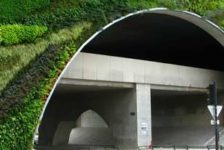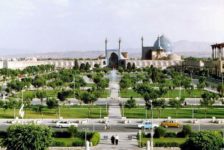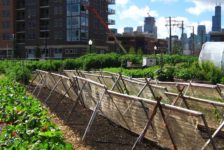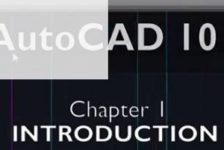This week we’ll look at some techniques that can help you draw faster. But first, let’s ask ourselves why do we want to draw faster?
In ideal circumstances, we can take as much time as we need to complete a really detailed drawing. On many occasions, however, we don’t have enough time to draw and it’s important to be able to squeeze as much information onto a drawing as possible in the time span we have available. That’s when you need to draw fast.
Before we start, you need to remember an important fact: there is no such thing as a bad sketch, no matter how fast it’s drawn or how accurate it is. A sketch is always a graphic recording of our thoughts at a certain time in certain circumstances. Even if it’s just a fast scribble.
When we don’t have much time for a drawing, I suggest starting with the part of the image we’re most interested in in case we run out of time to complete the whole drawing. In the sketch in the video it’s a mountain massif, a part of the Alps between Slovenia and Austria.
There are two ways to draw faster. The first one is obvious – one simply moves the hand faster. It’s not hard – we constantly do it naturally when we want to draw something simple, like a scribble. I’d like you to try doing the same when sketching and you’ll be surprised how easy it is. By consciously practicing this, you’ll get faster with every sketch.
The second trick I use is not removing the pencil from the paper surface. Lifting the pencil takes up a surprising amount of time. We usually do it when we turn our eyes from our drawing to observe the image drawn. But when we want to draw faster, we can simply continue to move our hand during the moments when we’re not looking at our sketchbook and let the pencil draw a continuous line throughout the drawing. The result is also a special kind of flowing drawing. This works great for drawing landscapes, but not so much for drawing urban scenes, which tend to have straight lines and sharp edges.
When you finish the motive you’re interest in, like the mountains in the video, you can move on to other less important parts of the drawing. I add the forest up front, the small chapel and of course, the structure of the fields.
And also a final tip. Our drawing speed also depends on the the pen and paper we use. Some pens or pencils just don’t allow fast drawing, while others have a smooth flow and are more adequate for fast sketches. Also, it will be harder to draw fast on watercolor paper then on smooth paper. So consider this before going out drawing.
Fast sketches often tell us even more than normal drawings. It’s because when we do not have enough time, we stick to what’s important for us in the image, and thus produce a very informative drawing that contains information important to us. Some of my best sketches were drawn really fast, while travelling on the train, bus or in the car–in the passenger seat, not the driver’s seat obviously.
I encourage you to try these techniques out, and remember: there is no such thing as a bad sketch!
Related article: How to Choose Your Pen and Sketchbook
Linescapes is a project focused on exploring drawing techniques for recording and analyzing landscapes. It also tries to promote hand-drawing in landscape architecture.
You can also follow Linescapes on Youtube, Twitter, and Facebook!
Published in Blog









alice niu
good idea!